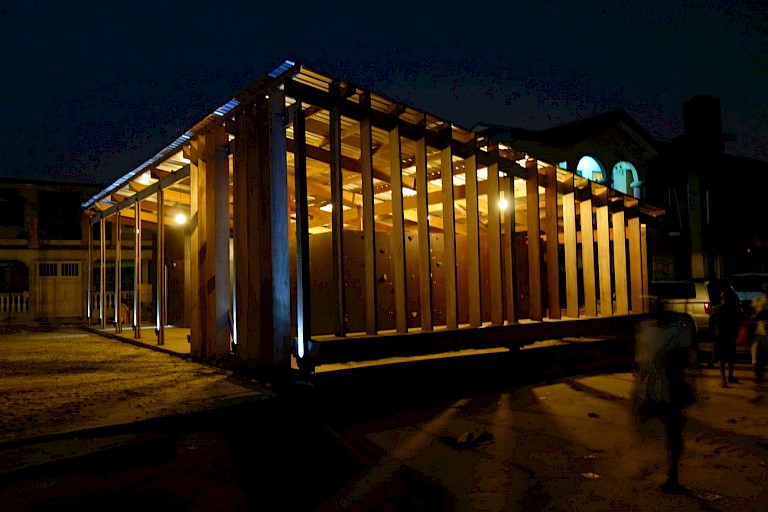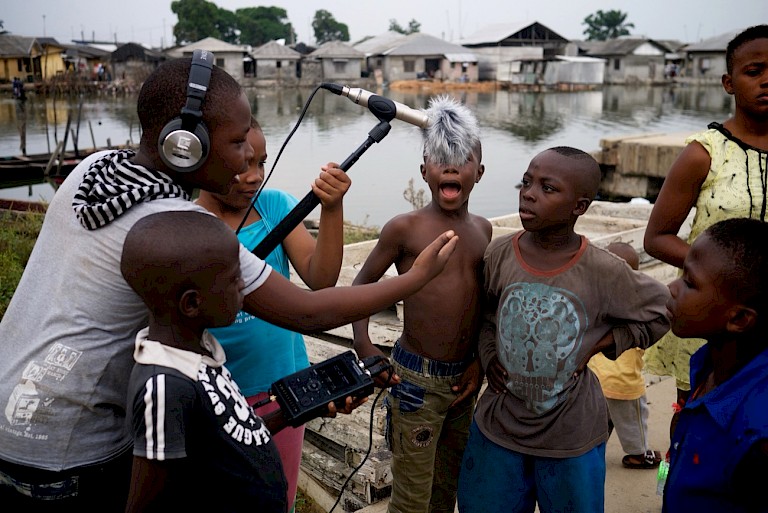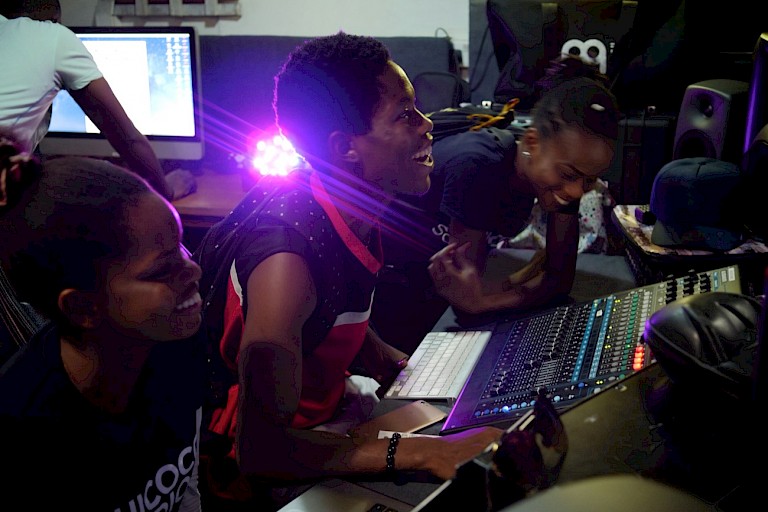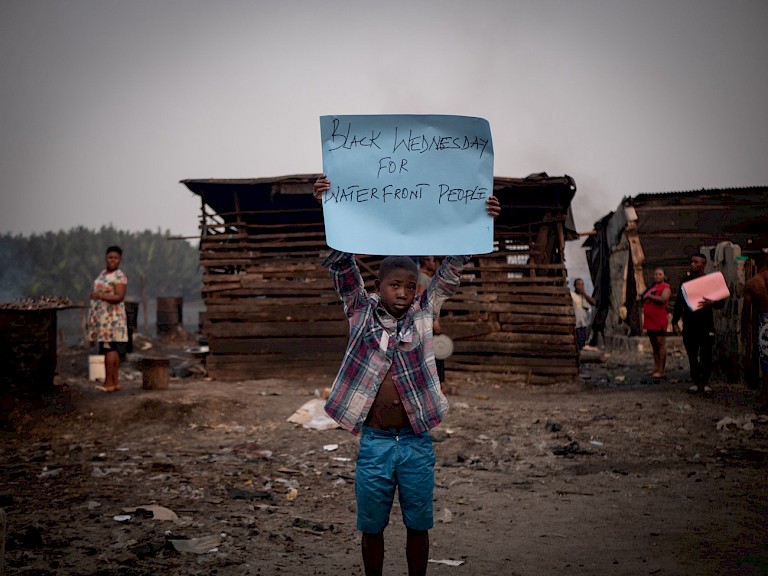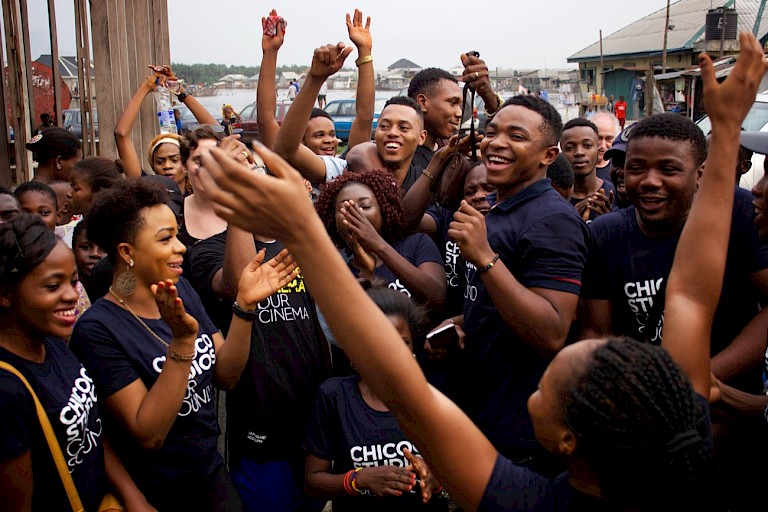



CMAP has trained over 100 waterfront slum residents as citizens journalist, writers, sound engineers, programme presenters, studio operators, music producers, drama directors, newscasters, station managers and community correspondents. As at 2014, about 240 student journalist from 23 local government areas of Rivers State, including non- indigenes were trained by BBC'S correspondents in journalism.
Chicoco Radio Facebook posts, now managed by slum residents, show photo documentaries and reports of recurrent demolitions occuring on different days in 9 waterfront communities, with dates starting from 13th January, 2022 to 22nd February, 2022. Chicoco map created graphic illustrations showing Ariel view updates of all demolition sites. Trained Volunteers from the Chicoco crew, comprising aphotographer, writer, graphic designer and correspondent collaborate to provide the statistics and extent of damages on their settlements through multimedia, thereby accounting for voice and visibility of Port Harcourt waterfront communities.
Chicoco Map engaged Okrika waterfront residents to participate in mapping their settlements to account for their visibility and inclusion on the municipal map. Participants made connections while identifying the footprints of every home, school, shop, church, town hall, public toilet, workshop, bar and shed. The details of taking inventory of specific locations and identifying the functional space of each settlement, enabled tracking the occupational and economic status of settlers to in a transparent way, thus empowering residents to challenge the myth and prejudices of criminality associated with waterfront Chicoco Map thus unvieled the eye of surveillance on slum communities infrastructure, allowing for clarity in social reforms and effective governance of waterfront residents.
London based music producer and multi-instrmentalist Coby Sey, in January 2023, to open up threads of digital dialogue between the streets of London and Port Harcourt's dense informal settlement. In July 2023, Chicoco Radio Viral Times noted that the Chicoco Crew received an invitation to exhibit in the 2023 Venice Architecture Biennale. Considering that the Venice Lagoon and the Bight of Biafra are situated historically within the context of centuries of transnational exchanges, and symbolically within the framework of shared landscapes, the Chicoco crew sought to explore an orchestra of ecological and geological installation. The installation covered sonic layers of agricultural sensor signals, seismic wave sounds, creature calls, weather and human voices from the creeks and across the ocean. The hearing of synthetic Landscapes and Soundscapes from the slums of Port Harcourt in Venice makes new memories of advancements in the advocacy of being heard, which validates the sustainability of Chicoco Radio.
Michael Uwemedimo is director of CMAP, a Collaborative Media Advocacy Platform who began the Chicoco Collective Human City Project as a collaborative intiative with victims of government sponsored forced eviction, in the slum residents of Port Harcourt waterfront communities, Rivers State, Nigeria.
Mr Uwemedimo, a filmmaker, in 2009, had on request by Amnesty International against government sponsored evictions, took footage of demolition scenes filmed at Njemanze, Abonnema Warf, which resulted in over 19,000 displaced residents. Mr. Uwemedimo sent feedback to amnesty international, and also began engaging with the indigenous community members, showing them demolition scenes through an inflatable screen.
Uwemedimo noted that "suddenly, the people saw themselves as recognized" and also realised the camera as an instrument to tell their story. Henceforth, in 2010, Uwemedimo initiated CMAP, and began training volunteer artist and activists to use the camera, cinema, radio, and music for social change. Volunteers received a three year training in journalism, technical maintenance, on-air operations, production skills, and audio engineering. Chicoco was named after a black fibrous mud, gotten from the Niger mangrove and swamps. Chicoco became a grassroots art movement with diverse multimedia spaces, to promote the visibility and voice of slum communities in Rivers State.
